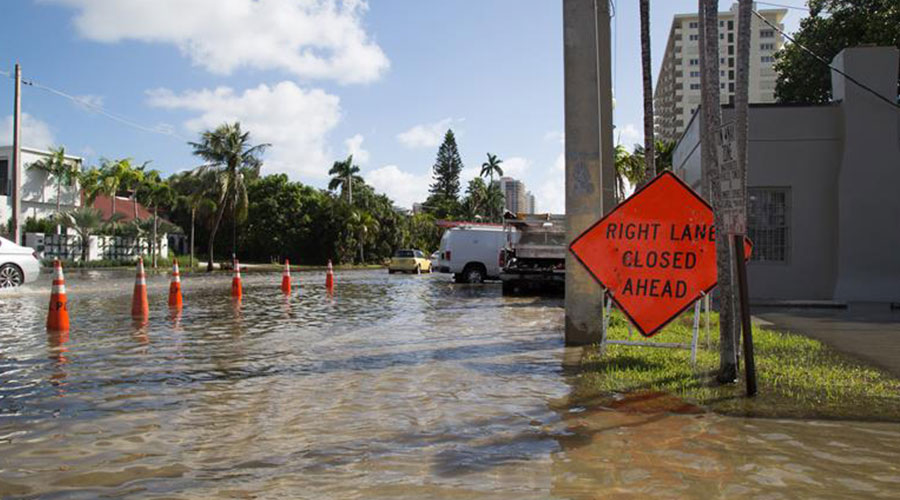Before trouble strikes
Emergency maintenance can be costly, dangerous and stressful, and it’s completely preventable for departments that prepare and plan properly
Many maintenance and engineering organizations spend more than 50 percent of their labor hours performing emergency work. What is an emergency? Let’s define it as a situation in which an unscheduled shutdown of needed equipment has occurred or is imminent due to the danger of injury to personnel, critical harm to operations, or the potential for major equipment damage. This type of situation requires immediate response, and, if needed, overtime would be approved automatically to deal with it.
Not all maintenance work treated as an emergency fits this description. Yet this is the most expensive category of work. And “emergency” work that is done because of someone higher in the organization requests it — not because it truly is an emergency — only worsens the problem.
On the other hand, a growing number of maintenance departments now use planned maintenance programs based on preventive and predictive maintenance that optimize cost and reliability of equipment. In organizations with these techniques in place, less that 10 percent of the maintenance work is emergency, as defined above.
Assessing the Situation
In a well-managed maintenance department, all of the supervisors and front-line technicians are used well, which means they are on work assignments when an emergency occurs. So communication with them by means of cell phone, pager, loudspeaker or a signal device is essential.
If a tradesperson already is in the area of the emergency, authorized operations personnel can advise the maintenance supervisor by phone that an emergency exists and that the requester has asked for assistance. The tradesperson does the work while the requester fills out or calls in a work order, which is given to the tradesperson before he or she leaves the job site. The worker completes the job, fills out the rest of the work order and returns it to the supervisor.
If no tradesperson is in the area, the requester advises the maintenance shop via phone that an emergency exists and describes the problem. The maintenance supervisor assigns a worker, and when the worker arrives at the job site, the requester gives him a work order. The work is completed, and the work order is closed in the CMMS as complete.
If the department enforces a “work order for every job” rule, the equipment record will be more complete, and the performance indices will be more accurate, due to a larger percentage of the work documented in the CMMS.
Anticipating Problems
The only information not predictable about emergency situations is when they will occur. Experienced maintenance managers can predict all of the other factors — location, craft, type of work, tools, equipment and material needed — after giving some thought to the most likely occurrences.
Given these facts, managers can do much ahead of time to prepare for these events to ensure they are handled quickly and with a minimum of downtime and disruption. Here are steps managers can implement that will shorten emergency-response time without producing added costs:
-
Post the name and phone number of the maintenance person to be contacted in each requester’s work area.
-
Post the request checklist (on this page) near each phone.
-
Train personnel to notify a supervisor immediately when an emergency occurs and to have required information ready when the supervisor arrives at the work station.
-
Have designated maintenance supervisory and crafts personnel trained to respond quickly with the right diagnostic tools and instruments for the situation at hand.
-
Prepare tool carts with equipment for use in these situations, minimizing the time required to gather them together. Time lost in getting to the job site and in making repeated trips to the shop or storeroom lengthens costly downtime.
Managers also can maximize technician effectiveness by ensuring technicians use good mechanical and electric diagnostic techniques. Managers will save on the related training costs tenfold or more in reduced downtime.
One such technique is to trace problems using functional failure analysis, rather than random troubleshooting. This technique will eliminate wasted time trying to find the component that failed. Functional failure analysis uses decision-tree logic to narrow down choices until the final choice yields the solution. Using the technique can minimize dead ends and backtracking.
Safety During Emergencies
Emergency work is less safe than routine maintenance, in part because everyone is in a hurry. But safety should remain the top priority. It must be instinctive, and it and will be if safety reminders are present in all areas of the shop and facility. Even in emergencies, managers can plan technicians’ action at the job site. Departments can train workers in advance to practice good safety measures because in the rush to get things back to normal and return facility activities to normal, technicians can resort to dangerous shortcuts. The practices to avoid include but are not limited to:
-
using improper tools
-
using improper methods, such as not locking out power switches before working on moving equipment
-
using improper material handling equipment, such as rigging, blocking or undersized hoisting equipment.
Failing to use safety net, safety lines or adequate safety railings when working overhead are also dangerous shortcuts that can cost lives. These practices are much more likely to to occur when someone is in a hurry than in routine repair situations.
Staffing Fallout
The effect of emergency maintenance as a policy invariably will increase costs substantially. Consider this example: The policy of a facility that practices emergency maintenance is that the department must provide immediate response. So if the department receives 40 one-hour emergency requests for mechanical work at the same time, the staffing required is 40 mechanics.
On the other hand, if these 40 jobs are identified while they are still minor, routine, non-emergency work that can be spread over one week, they require one mechanic. Among the other adverse effects of emergencies are the following:
-
Technicians take unsafe shortcuts.
-
The right craft isn’t available right away.
-
Technicians lose time interrupting jobs in progress and traveling between sites.
-
Other planned work is deferred and causes a domino effect that results in more breakdowns.
-
Needed tools and equipment are tied up elsewhere and time is lost getting them to the emergency worksite, or technicians use less efficient tools.
In the end, avoiding the costs associated with emergency maintenance might be the best argument for investments in planned, scheduled maintenance.
Communication that Pays
Even though a good preventive maintenance program exists, managers still will face an emergency situation occasionally. One of the most effective types of training for maintenance personnel and requesters addresses effectively requesting maintenance service, in particular emergency service.
Time is always a precious commodity in maintenance, so the time to communicate requests should be minimized. This is best achieved by standardizing the information required and by training all requesters to get in the habit of always requesting the work in the same standard manner. Here is a sample checklist managers can use to achieve this goal:
Emergency Maintenance Request Procedure
In an emergency, call extension xxx and give the information in this sequence:
1. Caller name and phone number. Is safety involved?
2. Department where work is needed.
3. Machine or equipment number and location.
4. Describe the part of the equipment causing a problem.
5. Describe the work requested and the priority.
6. When can the work be done? Now/This shift/Next shift/Other
7. When must the work be complete?
8. Is the equipment down?
9. What maintenance craft is needed? Electrical/Mechanical/Other
10. How did the problem happen?
11. What was the equipment doing before the problem — noise, smoke, heat, change in speed or operation, etc?
12. If minor, have you tried to fix it? What happened?
13. Are parts needed? If you know, describe the type, size and quantity.
14. Are other materials needed — special tools, ladder, portable lights, safety equipment, fire extinguisher, etc?
15. Is any special authorization or charge number required?
16. Are special permits needed for burning, welding, entry, etc.?
— Thomas A. Westerkamp
|
Scheduling and Emergencies: Addressing the Myths
Too many managers believe that maintenance work cannot be schedule because emergencies always cause interruptions. While some interruptions occur, they should not deter managers’ attempts at daily scheduling. Those who favor the breakdown-maintenance approach often say, “If my maintenance people are idle, I know everything is okay” and “I have people available right away if a breakdown occurs.” Here are several myths contained in these arguments:
First, since emergencies occur at random, peaks and valleys in the emergency workload vary greatly. These conditions often result a surplus or shortage of the craft skills required to respond properly, but never the exact number.
Second, if no work is done before a machine breaks down, it perpetuates the breakdowns. Eventually, the frequency increases, further disrupting the operating schedule.
Third, the length of repair increases. In an economy move, a large facility in the southwest discontinued preventive maintenance on roof supply and exhaust fans. The result: Several bearings seized as the grease dried, causing the air-handling system to break down. In the process, blowers were thrown out of alignment and severely damaged by contact with the housing.
— Thomas A. Westerkamp
|
Related Topics:











